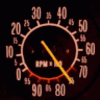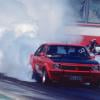I know, i know, this gets asked all the time and i have used the search forum and looked at those answers as well.
I have a few questions for welding with a mig.
The welder i have is a unimig 180amp, with argon/co2 gas bottle and using mild steel wire. I'm using the lowest amp setting with a wire feed around 3-5 and a bit under 13l/pm of gas.
I'm having a few problems, the main one is blow throughs, which i think is due to me not preparing my metal well enough, trying to weld on bits that have been grinded and are too thin.
Another big problem is porosity, my weld pools look like craters with a lot of little pin holes around them, i've had a play around to try and fix it but can't seem to get the hang of it.
Another thing is that it looks like it isn't penetrating enough, like the welds are sitting on the top of the joins.
Can anyone please give me some hints with welding in particular and the best settings to use on 22gauge panel steel.
Any help right now is appreciated. Cheers.

















